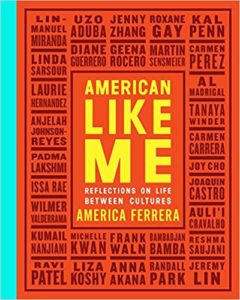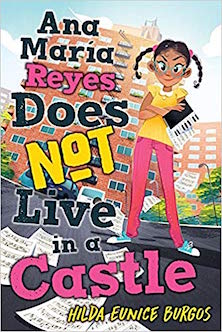Teaching Students to Love Their Individuality
A MiddleWeb Blog

That’s right. When I think back to my childhood (especially in upper elementary school and through middle school), I remember wanting desperately to be American. American-American. Not the in-between half Serbian, half American self that I awkwardly felt I was. I wanted to fit into the definition of “American” that I saw in my mind.
Why did I feel this way? I loved my family. I enjoyed the food we ate at home and our language. But outside of my home and especially at school, surrounded by kids whose hair color and eyes were different from mine and whose parents didn’t have accents or whose mothers seemed more independent than mine, I simply wanted to fit in. I wanted to laugh at their jokes and be invited to football games and sleepovers.

How can we help our students extol their identity and their culture and empower them with the strength to be themselves at an early age? Here are some ideas.
Be a Model of Individuality
We can model what it means to embrace our own individuality. We can show our cultural confidence. We are strong role models for our students. What we do and say has an impact on them. The opposite is also true: what we don’t do and don’t say also impacts them. When we stand idly by and allow students to feel less than who they are, we allow them to minimize their identity. We can model the power of differences and being unique.
We can let students see us as a model of individuality. One way to do this is by not conforming but standing out and standing up! For example, perhaps you wear a hijab. This is part of who you are. Be a model of individuality. Or maybe you know more than one language. Let students know how valuable this is. Some students who speak a language other than English shy away from sharing it with their peers out of fear of embarrassment. But when teachers highlight bilingualism as an asset, we shine a light on their individuality.
Surround Students with Books
Surround students with books that showcase characters with strong individuality but also characters that your students can connect with and relate to. Students who are comforted by their own cultural stories feel less alone. Take a look around at the demographics of the students in your classroom. Then reflect on the books on your shelves. Is there an alignment? If not, work towards a stronger match.
Not only will matching books to readers be helpful, but the diversity in books will help to build empathy in the classroom. As students read books about characters that are not like them, they will begin to understand the lives of others. Understanding that we are all different and that being different is okay is an important part of recognizing and accepting self identity. Find lots of possibilities for all ages at ALSC’s Notable Children’s Books – 2019.
Share Stories
When teachers share our own personal stories about times when we’ve felt different, our students see that they aren’t alone. It’s especially important for students to hear that being different is our power. Don’t hide it!
Differences come in many forms. There are times when each of us has experienced feeling different. We can share stories about feeling different because of our gender or our culture. We can share about feeling different because of our age or the way we look or the way we learn. Taking time to share stories allows students to see that feeling different is not unusual.

These stories are powerful to students, especially if they feel a connection with the performer. Recently I found the book called American Like Me: Reflections on Life Between Cultures by America Ferrera. It’s an interesting book that features 31 stories from actors, athletes, and writers about life in the spaces between cultures.
Fitting in as Their Whole Selves
Wanting to fit in is not a new phenomena in the middle grades. Most middle schoolers have experienced the urge to be more like their peers. The earlier students realize how valuable their identity is and how to use it to their own advantage, the better off they will be.































